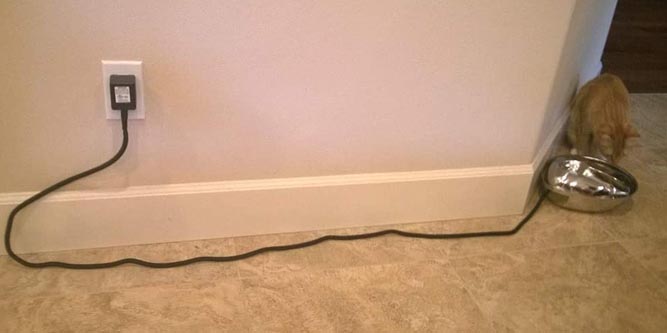When you don’t have easy access to a power outlet, using an extension cord is an obvious alternative. Extension cords are great for Christmas lights, power tools, and all kinds of electronics. They give you a way to get power to areas where you otherwise wouldn’t have access. On the downside, extension cords are also kind of ugly. There’s something about a big dangling cord that looks sloppy and unappealing.
This isn’t a big issue on a construction site, or if the cord is running behind your furniture. But if the cord is highly visible, it can mar your room’s appearance. Thankfully, you don’t have to leave a bare wire strung across your room. You can use a cord cover to make it more appealing. Before we get started, be sure to check out the best cable management boxes if all you’re looking for is neater cables and less clutter.
Today, we’re going to review three of the best cord covers and sleeves for protecting cables. We’ll start by looking at the Cordinate Fabric Cord Cover. This is a fabric sleeve that’s available in multiple colors, and closes with velcro. Next, we’ll examine the Keco Cable Management Sleeve. This is a black nylon sleeve that wrap around your cords, and comes in multiple lengths and diameters. Last, we’ll check out the AGPTEK Floor Cable Cover. This is a tough, durable cover that’s designed to be walked over. But which one is the best choice for your project? To find out, we’ll have to dig a little bit deeper. Let’s see what we find!
Extension Cord Basics
You can use a cord cover for just about any type of cord. You can use them for Ethernet, coax, and even USB. There’s really no limitation. That said, most of the time you’re using one of these sleeves, it’s going to be with an extension cord. With that in mind, it’s worth discussing what kinds of cord you might use. Here are some basics to get you started.
What Length Do You Need?
The first thing you need to think about with an extension cord is the length. Simply put, you need one that’s long enough for the job. But “long enough” isn’t always good enough. A cable that’s pulled too tightly can become stressed, and end up getting damaged. You want one that hangs freely, and has plenty of slack. That way, you don’t have to worry about premature damage due to stress.
A short cord might also force you to daisy-chain more than one extension cord. This is unsafe, because adding more cords adds more resistance. Resistance, in turn, causes the wires to get hot, and could melt the insulation. In the worst case scenario, you might even start a fire. To avoid this kind of situation, it’s best to use a slightly longer cord than you need. As an added bonus, you’ll be able to repurpose the cord for longer applications later on. Length and diameter are also major considerations for cord covers. You want one that’s long enough – and fat enough – to fit all your cords and cables.
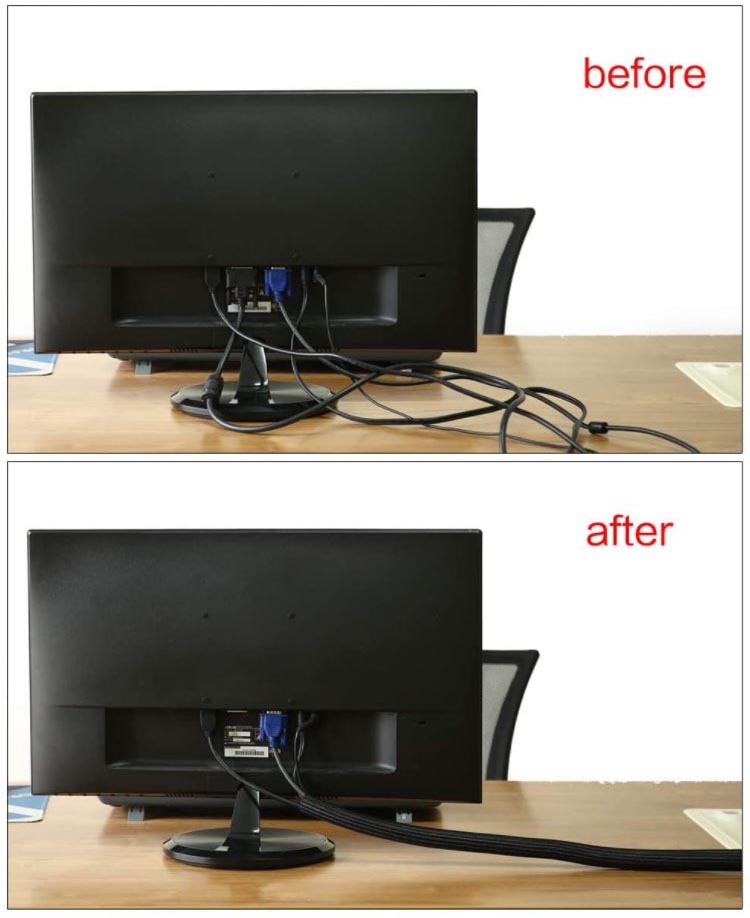
What’s Your Amperage?
Amperage is a measure of how much power an extension cord can safely deliver. A standard residential outlet is rated for 15 amps, and heavy-duty outlets are rated for 20. This is leaving aside unusual applications, like 240-volt power. Outdoor extension cords are frequently capable of handling 15 or 20 amps, to meet those demands. Indoor cords, on the other hand, will often deliver less amperage. This isn’t a big deal for most applications. Lights, computers, and even large TVs won’t draw anything close to 15 amps. That said, if you want to run high-powered devices, a heavier-duty cord is going to be a must.
Permanent Use?
Normally, it’s not recommended to use an extension cord on a permanent basis. They wear out over time, and eventually, the insulation becomes compromised. When this happens, there’s a risk of fire or electrical shock. So if you own your house, it’s wiser to install a new outlet when you need a permanent power supply. That said, this isn’t always possible. Some walls have no interstitial space for running wires. Or maybe you’re renting, and you’re not allowed to modify the apartment. In those situations, you might have to run an extension cord on a more long-term basis.
If you’re going to do that, find a heavy-gauge cord that’s more powerful than you really need. And as always, look for one with a little extra length. This will reduce wear and tear, which will lengthen the lifespan of the cord. It also helps to look for cords with flat plugs, which are less susceptible to accidental damage. Another thing to look for is a cord that’s round instead of flat. In general, round cords tend to be more durable, although that’s by no means a guarantee.
Time scale is equally important when you’re choosing a cord cover. Do you want one that’s more durable? Or would you rather the wrap was easier to take on and off, regardless of durability? It will depend on whether you’re doing something seasonal, or setting up cables for the long term.
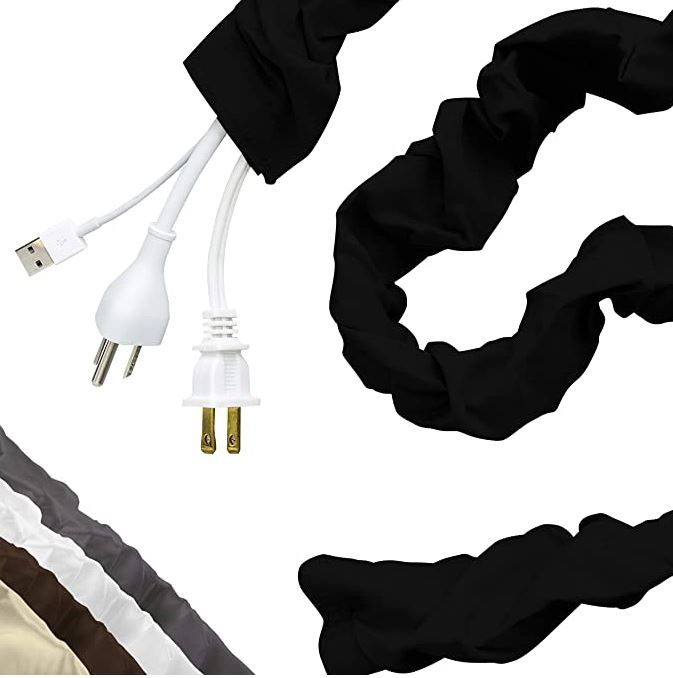
Cordinate Fabric Cord Cover
The Cordinate Fabric Cord Cover is designed for applications where you want to dress up your cables. Far from being restrained, it’s meant to become a part of your décor. This sleeve is stitched from nylon fabric, with a smooth feel and a tight weave. It’s also surprisingly durable, despite its decorative appearance. There are six different colors available: red, black, cream, brown, white, and grey. You also get two different choices for how to order it. It comes individually, or in a two pack. The sleeve itself is six feet long, but it can actually be used for longer cables. If you don’t mind a little gap, you can use two or more to get as much length as you need.
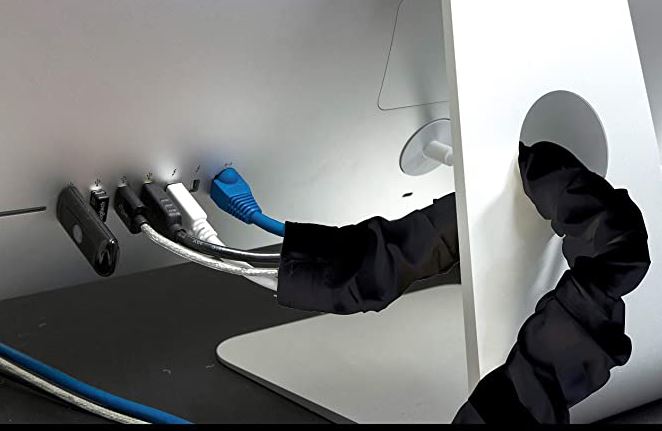
One thing that makes this easier is the way the cover closes. Instead of being a solid tube, it’s actually closed with velcro along the entire length. You just undo the velcro, put the wrap over your cords, and re-close the velcro. If you’re using more than one cover, you can even velcro them together to create a (mostly) continuous cover. For shorter cables, you also don’t have to worry. Because this wrap is fabric, it will simply bunch up or stretch out depending on the length.
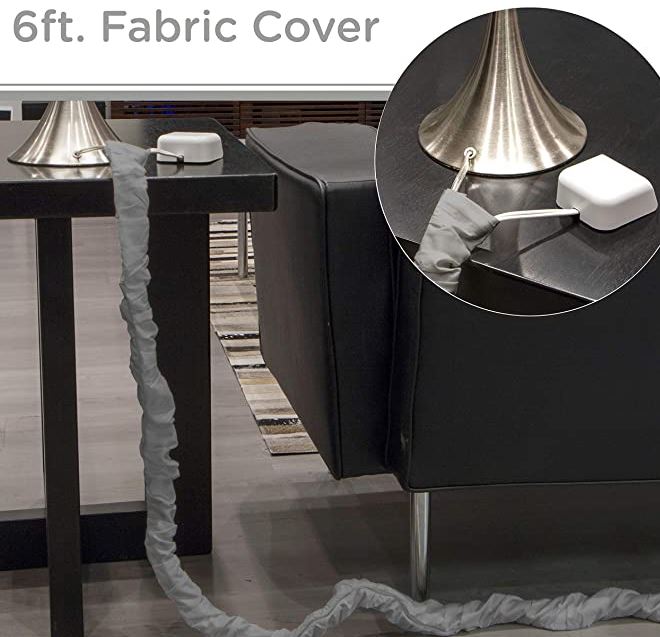
We liked the overall design of the Cordinate cover because it’s simple. You can wrap your cables in just a couple of minutes. You can also easily access it if you want to add or remove cables as time goes on. We wouldn’t necessarily recommend this cover for long-term use. While it’s attractive, it’s just a fabric sleeve, and it will eventually get dirty or torn. Then again, if it gets dirty, all you have to do is throw it in the washer. For seasonal applications, meanwhile, this is an ideal wrap. It comes in enough colors that it can be used for Christmas, New Years, or any other holiday. It’s also perfect for special events or displays. Against an appropriate backdrop, the black and white versions in particular will practically disappear.
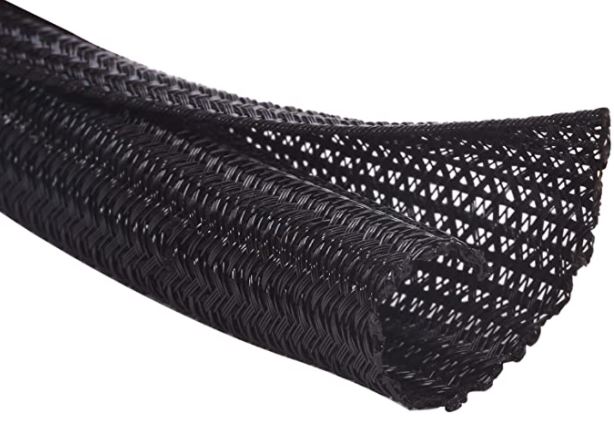
Keco Cable Management Sleeve
The Keco Cable Management Sleeve is a more utilitarian sleeve designed for protection more than cosmetics. Where the Cordinate sleeve is meant to be front and center, this one is meant for behind-the-scenes use. It’s available in two different lengths: 10 feet and 25 feet. As a result, it’s suitable for longer runs where other covers wouldn’t be suitable. In addition to having two different lengths, you also get different choices of diameter. The smallest is only a quarter of an inch in diameter. But there are larger ½, ¾, and 1-inch sizes. The smaller versions are good for a single cord, or for bundles of smaller cables. The 1-inch version can accommodate multiple heavy-duty cables inside.
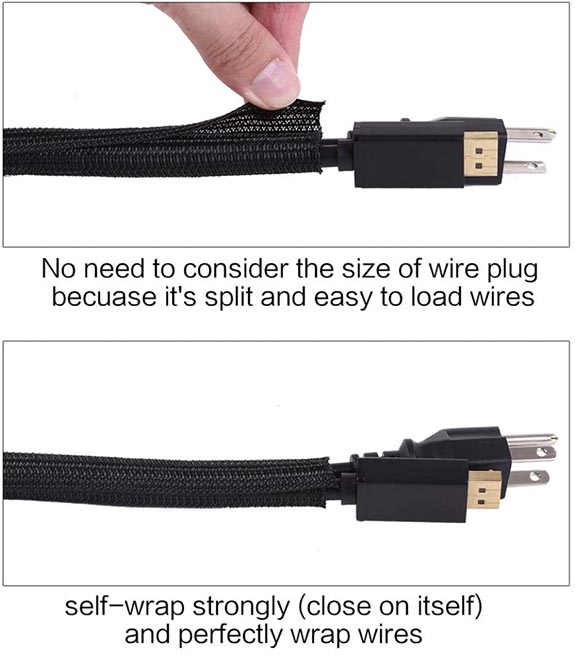
This sleeve comes in one color, and it’s black. It’s made from a heavy mesh material that’s open on the side. However, the way the mesh is constructed, it curves back on itself, which closes the gap. This design makes it very easy to add and remove cables over time. You don’t even have to disturb the other cables if you’re being sufficiently careful. By the same token, initial setup is very easy. Since you can load the cables from the side, you don’t have to unplug them first. So if you want to wrap cables on an existing installation, the job will be simple.
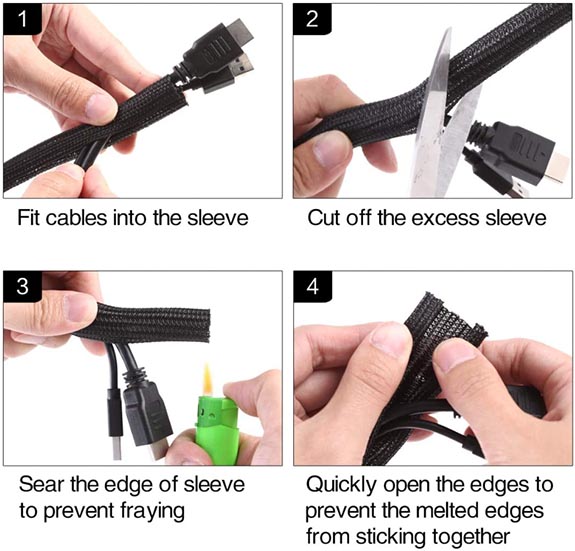
Because of the mesh design, the Keco sleeve is see-through. This makes it less appealing from a cosmetic perspective. However, this also allows you to see what types of wires are inside a given bundle. And despite being a mesh, the material is fairly stiff. This makes it surprisingly durable, despite the fact that you can see through it.
Another thing we really liked about this sleeve was the fact that it provides a measure of shielding. The material is designed to absorb EMF radiation, so it will protect your cables from interference. For simple extension cords, this shouldn’t be necessary. That said, it will keep the power cords from interfering with nearby devices. On the other hand, if you’re wrapping data cables or audio cables, insulation is a huge benefit. You’ll get a noticeably clearer signal than you would with an un-shielded cable wrap.
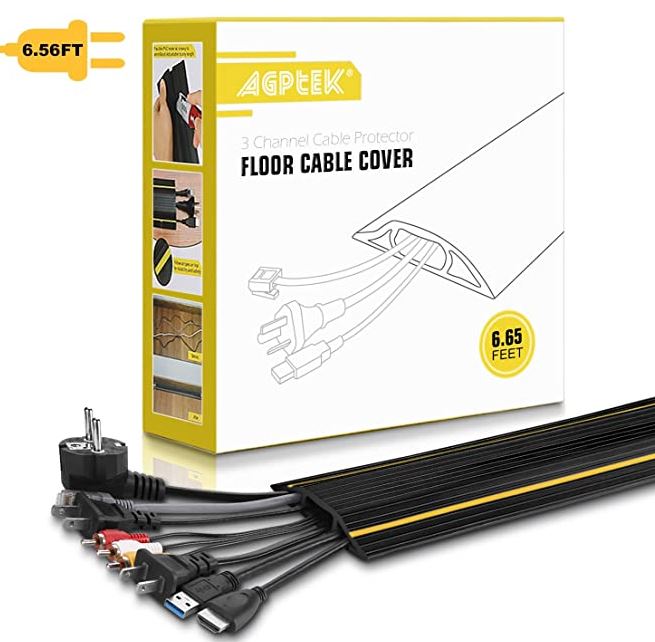
AGPTEK Floor Cable Cover
AGPTEK is a company that specializes in all things electronic. Among their other offerings, we’ve reviewed their SNES emulator controller not too long ago. The AGPTEK Floor Cable Cover is a different animal entirely, but we decided to give it a look. In fact, this cable cover is about as different from the last two as it is from a video game controller. The Cordinate and Keco covers are basically sleeves. They’re designed to be used on wires that are hanging, running horizontally, or even draped across the floor. The AGPTEK cover, on the other hand, is far more specific. It’s purpose-built for protecting cables on heavily-trafficked floors. It can also be used on walls, in theory, but floors are its strongest point.

This cover is 6.5 feet long, and it comes in black or grey. It’s designed from a durable, heavy-duty rubber, with a flat top and sides that slope downwards. There are actually three different channels inside where you can route your wires. The first, primary channel is the largest, and it runs down the center of the cover. This channel measures 0.93 inches wide, and 0.42 inches high. The side channels are right triangles, with a width of 0.75 inches. At their tallest point, they’re 0.39 inches high. All three channels have a little slit down the bottom. This lets you insert and remove wires without having to run them trough the ends.
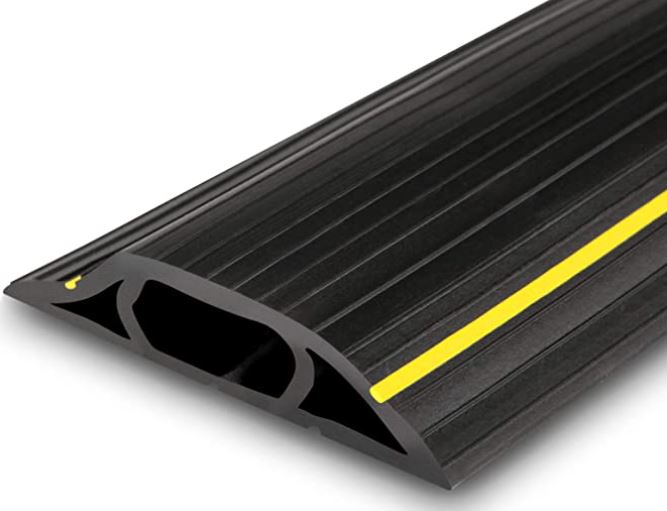
The PVC rubber is exceptionally safe and durable. It’s non-conductive, non-toxic, and has a very long life. It also lasts for a long time, even in direct sunlight. So if you’re looking for a quality outdoor cable cover, you’ve found an excellent option. Another thing we liked about the AGPTEK cover is that it has bright yellow stripes down the sides. This is an important feature, since it’s fat enough to present a tripping hazard. Because the yellow lines are so highly visible, the risk is significantly mitigated.
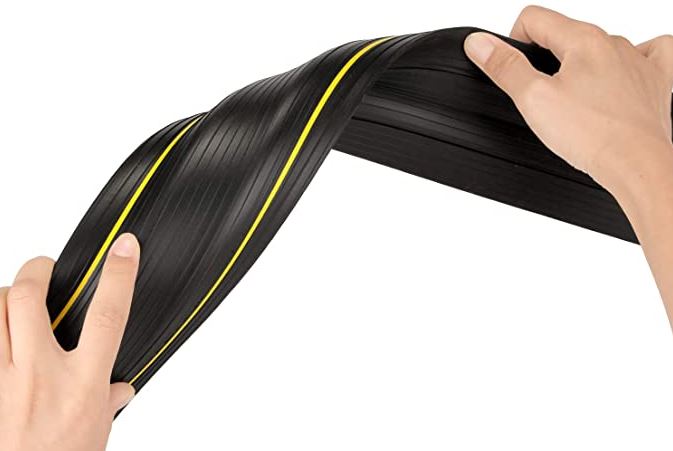
Final Verdict
As you can see, each of these cord covers has its own strengths and weaknesses. Let’s go over what we’ve learned. We began by reviewing the Cordinate Fabric Cord Cover. It’s not as tough as the others, but it’s certainly the most attractive. And with six different color options, it can be ordered to match any room.
Next, we looked at the Keco Cable Management Sleeve. This sleeve is a better choice for voice and data cables, because of its shielding capabilities. It’s also very durable.
The AGPTEK Floor Cable Cover is the toughest of the bunch. It’s made to be walked on, and the PVC rubber construction can take a serious beating. There are plenty of floor covers like it, but we liked this one’s design the best. The yellow safety stripes set it a cut above the competition.
Meet Ry, “TechGuru,” a 36-year-old technology enthusiast with a deep passion for tech innovations. With extensive experience, he specializes in gaming hardware and software, and has expertise in gadgets, custom PCs, and audio.
Besides writing about tech and reviewing new products, he enjoys traveling, hiking, and photography. Committed to keeping up with the latest industry trends, he aims to guide readers in making informed tech decisions.

